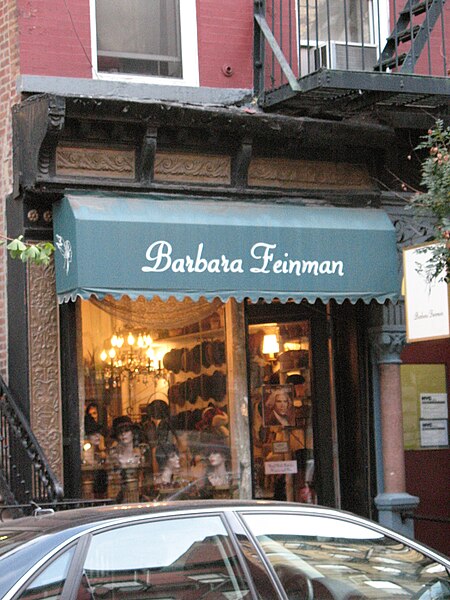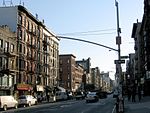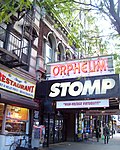Barbara Feinman Millinery
Clothing companies based in New York City

Barbara Feinman Millinery is a custom hattery in New York City's East Village. Feinman hats are made by two other milliners using a 100-year-old sewing machine and various materials.
Excerpt from the Wikipedia article Barbara Feinman Millinery (License: CC BY-SA 3.0, Authors, Images).Barbara Feinman Millinery
East 7th Street, New York Manhattan
Geographical coordinates (GPS) Address Nearby Places Show on map
Geographical coordinates (GPS)
| Latitude | Longitude |
|---|---|
| N 40.727363888889 ° | E -73.986955555556 ° |
Address
East 7th Street 66
10003 New York, Manhattan
New York, United States
Open on Google Maps







